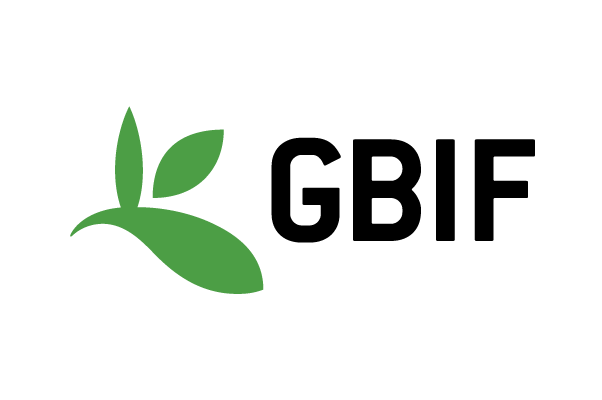The Species Habitat Index (SHI) measures changes in the estimated size and quality of ecologically intact areas supporting species populations. Ecosystems are made up of species, and as multi-species aggregate, the SHI provide a compound estimate of the ecological quality of natural ecosystems and the health and resilience of species populations.
An interactive SHI map is hosted on Map of Life.
| EBV class Species Populations Species distribution |
EBV class Ecosystem Structure Ecosystem extent and fragmentation |
Purpose
To provide an annually updated measure of ecological intactness and species population trends that transparently builds on single species data, is globally comparable, has high spatial resolution, and can be developed and reported nationally.
Post-2020 Global Biodiversity Framework: Goal A
 |
CBD Aichi Target 5 Habitat loss halved or reduced |
 |
CBD Aichi Target 12 Reducing risk of extinction |
Coverage
The indicator can be calculated annually at near global scale and comprehensively for a large and growing set of species groups. It can be amended and optimized with regional or national data. SHI uses environmental and species data addressing all terrestrial areas of the world at 1 km spatial resolution, with extensions to marine underway. It can be aggregated at spatial levels ranging from 1 km to small regions, countries, biomes, and the whole planet. The index builds on land cover information available annually from Landsat and ESA CCI from year 2001 onwards. With continuation of these remote sensing products, this enables annual updates, including reporting through 2030.
Methods
The SHI is calculated using local biodiversity observations (e.g., as available through GBIF) and remotely sensed habitat characterizations. It quantifies changes in the estimated size and quality of ecologically intact areas supporting species populations. Remote sensing-informed trends are validated and uncertainty-assessed using in situ occurrence data at species level. SHI uses latest, best-possible predictions of species geographic ranges, based on a variety of sources combined with habitat information, remote sensing layers and models. These data can be augmented or replaced with other national data.
Modification, estimated size, quality, fragmentation, and connectivity of ecologically intact areas supporting species populations are quantified annually and species-level metrics then aggregated to countries. Separate indices can be calculated for different species groups, e.g. those dependent on certain habitats and ecosystems or those considered threatened. The indices can also be subset to species with particularly rapid recent habitat changes, and they can account for countries’ stewardship of species (their portion of a species’ global range).
Taxonomic coverage is growing and currently (2021) includes terrestrial vertebrates (~ 32,000 species) and select vascular plant groups. Inclusion of marine/coastal taxa and select invertebrate groups is in progress. Metrics are informed by a rapidly increasing number of occurrence records from the GBIF and other sources, currently > 500 million records.
Indicators and underlying data are available through a dedicated dashboard in the Map of Life web interface that has been developed with technology partners. Indicator values will also be available through the GEO BON portal, the UN Biodiversity Lab, and the CBD indicator dashboard.
Further resources:
WCMC metadata sheet – Feb 2022
WCMC | CBD metadata webinar presentation – 4 Mar, 2022
Hansen, A. J., B. P. Noble, J. Veneros, A. East, S. J. Goetz, C. Supples, J. E. Watson, P. A. Jantz, R. Pillay, and W. Jetz. Towards monitoring ecosystem integrity within the Post-2020 Global Biodiversity Framework. https://ecoevorxiv.org/eyqw5
Powers, R. P., and W. Jetz. 2019. Global habitat loss and extinction risk of terrestrial vertebrates under future land-use-change scenarios. Nature Climate Change 9:323-329. https://doi.org/10.1038/s41558-019-0406-z
Jetz, W., M. A. McGeoch, R. Guralnick, S. Ferrier, J. Beck, M. J. Costello, M. Fernandez, G. N. Geller, P. Keil, C. Merow, C. Meyer, F. E. Muller-Karger, H. M. Pereira, E. C. Regan, D. S. Schmeller, and E. Turak. 2019. Essential biodiversity variables for mapping and monitoring species populations. Nature Ecology & Evolution 3:539-551. https://doi.org/10.1038/s41559-019-0826-1
Jetz, W., and D. Thau. 2015. Map of Life: A preview of how to evaluate species conservation with Google Earth Engine. Google AI. https://ai.googleblog.com/2015/01/map-of-life-preview-of-how-to-evaluate.html
“Environmental performance index.” Yale University and Columbia University: New Haven, CT, USA (2020). https://epi.yale.edu
Karger, D. N., M. Kessler, M. Lehnert, and W. Jetz. 2021. Limited protection and ongoing loss of tropical cloud forest biodiversity and ecosystems worldwide. Nature Ecology & Evolution. https://doi.org/10.1038/s41559-021-01450-y
Almond, R., M. Grooten, and T. Peterson. 2020. Living Planet Report 2020-Bending the curve of biodiversity loss. World Wildlife Fund.

 Species Habitat Index
Species Habitat Index



